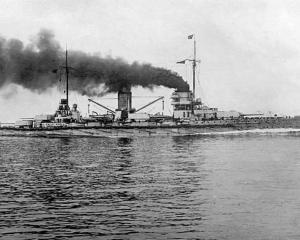The recent news about the proposed closure of the design course at the University of Otago alerts readers to the loss of an important discipline and this awareness is a good thing.
The university is required to be an open institution and must remain accountable, not only for the losses sometimes incurred in running its programmes but also the quality of its decision-making about how to fix things or prepare for future change.
The Otago Daily Times clearly sees this a matter of interest and has dedicated an editorial and leading stories to the university's plan to disestablish design.
While disturbed at this prospect, I welcome the debate on where design fits into the economy and university education.
Career paths for design graduates from Otago are not as limited as the editorial surmises.
Employers cannot get enough of the sort of graduates that come through this programme.
A letter to the pro-vice-chancellor of sciences co-signed by more than 60 recent graduates stated their current roles in the design industry.
The programme at Otago is unique as it operates within the wider sciences, arts and business cores of learning, drawing students from a varied range of knowledge and experience.
Equipped with strategic design thinking, these graduates move into areas where knowledge of systems and methods is considered more essential than straightforward practice skills.
No other design course in New Zealand does this and it is difficult to imagine it working outside a broad university framework where knowledge from other disciplines can be brought together.
Student numbers have fallen but demand for this graduate profile has increased.
How can this be explained?
The initial wind-down of the course in 2010 following the loss of funding for the Otago Institute of Design left senior management in the science division with the belief design had no place in the institution. School careers advisers and fellow academics were convinced the course was closed.
The fact that students continued to find their way towards design is validation of the course.
First-year enrolments have recently risen by 20% from their low point in 2011 despite the continued running down of staff numbers, equipment budgets and promotion.
The university has lost the equivalent percentage of students across the same period.
While the emphasis in the future has to be on attracting high quality students, I am convinced that design is a major growth area in industries and universities.
The announcement of a new graduate school in communications and information technology must be welcomed.
It comes with a significant funding boost from the Government that is needed to accelerate tertiary activity in these crucial areas of modern technology.
Industry recognises the need for strategic design to bring its knowledge of user needs and analytical methods to the table.
It is a major failing if the university cannot support an existing design programme that has been delivered at Otago since the commencement of the School of Home Sciences in 1910.
Unlike our past head of department Thomas Bley, I do not consider the university to be a 19th-century institution but one actively seeking new ways to deliver high-quality education, research and responsibility towards its community.
I remind the university that five years out of a century is not a long time and it is not too late to reverse its decision to close design.
• Michael Findlay is a professional practice fellow in the department of applied sciences at the University of Otago. This department is to be closed under a university proposal at present being considered. While other parts of the department will shift, the design course is set to cease.












